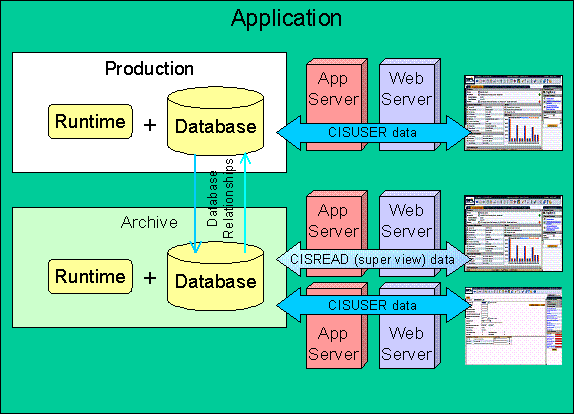Remember that the Archive Engine may be used to archive or purge data in environments other than production. While archiving from environments other than production may not make sense, purging from an archive environment has merit. Over time, the amount of data kept in an archive environment has the potential to mount. This is especially true if you archive fast growing tables on a regular basis.
Purging data from an archive environment is not really any different from purging from the production environment. In order to purge from an archive environment, you need to log into it under the CISUSR schema. This means a web server and application server must process data against this schema. This is not the same application server that processes data against the CISREAD schema, where view-only data is presented from the super views.

Once logged into the archive environment under the CISUSR schema, you execute a purge procedure to purge a subset of the archived data. You need to set up DB processes within the archive environment for purging the archived data.
Example - Purge From an Archive Environment
Let's say that for the last five years, you have archived pay event data that is two years old or older to an archive environment. Now you want to implement a purge of the pay event data in the archive environment that is four years old or older.

To perform the purge, you need to set up a batch control and a Purge DB process in the archive environment. The Purge DB process instructions for the pay event purge would look like this:
| Proc Seq | Maintenance Object | Parent Seq | Constraint | Parent MO Table (from Constraint) |
|---|---|---|---|---|
| 10 | Pay Event | - | - | - |
| 20 | Payment | 10 Pay Event | Pay Event Id | CI_PAY_EVENT |
| 30 | FT | 20 Payment | Sibling ID | CI_PAY_SEG |
PAY EVENT Maintenance Object Instruction Algorithm:
- Sequence: 10
- System Event: Purge Criteria
- Algorithm: An algorithm whose program logic returns false if the pay event is four years old or less. Alternatively, a table rule may be used.
FT Maintenance Object Instruction Algorithm:
- Sequence: 10
- System Event: Purge Processing
- Algorithm: (an algorithm of type PRPR-FT, this algorithm would have the "Modify Balance Control" parameter set to N)